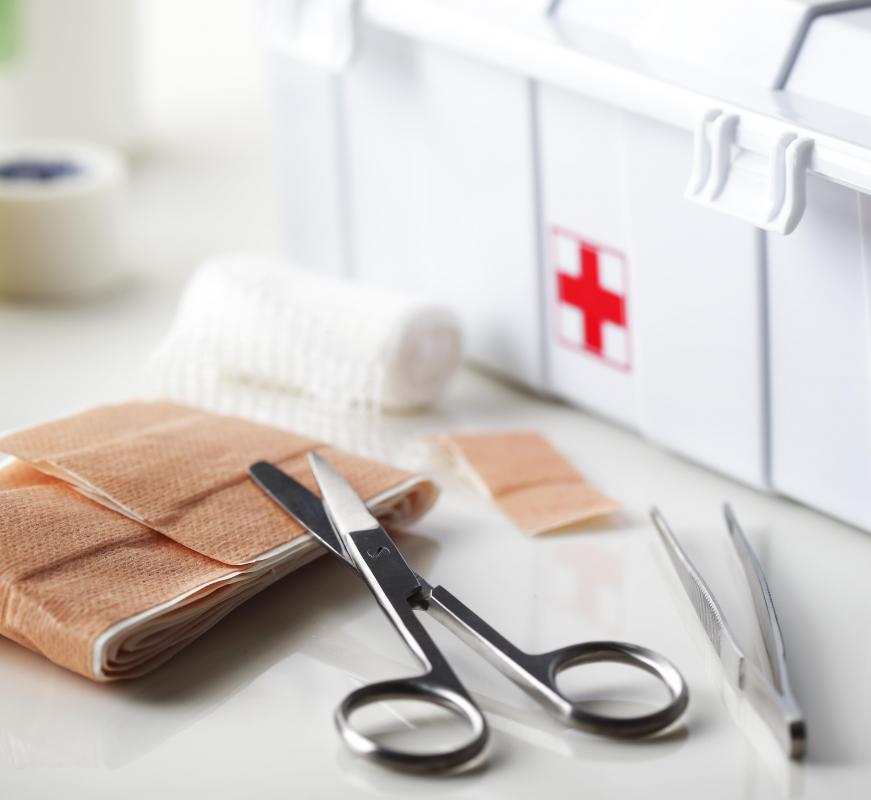At TheHealthBoard, we're committed to delivering accurate, trustworthy information. Our expert-authored content is rigorously fact-checked and sourced from credible authorities. Discover how we uphold the highest standards in providing you with reliable knowledge.
How do I Apply a Shoulder Bandage?
For protecting a shoulder injury against further harm, the injured person should ask a friend or family member to apply a shoulder bandage. The shoulder bandage holds the shoulder tightly to prevent jarring and movement that could further irritate a pulled or torn muscle. The victim may wish to place a heat or ice pack on the shoulder before wrapping to provide relief from soreness and pain. For a severe injury or one that does not heal within a week, the victim should consult a doctor. If the pain bothers the victim and she has problems moving her shoulder, she should seek medical attention as soon as possible.
To wrap the shoulder, the victim should choose a stretchable bandage with small clips to hold it in place or a cohesive elastic bandage that will stick to itself and requires no tape or clips. Often these supplies are available at the store or in a basic first aid kit. The bandage should be clean and in good condition. An old, dirty, or torn bandage may not provide the support needed to prevent the shoulder from moving too much.

A second person will need to do the actual wrapping. The victim should sit or stand still while this person wraps the shoulder. She should start by wrapping the bandage under the armpit and around the injured shoulder. It should be tight, but should not cut off circulation and should not cause any pain. If the shoulder is very sensitive, she should wrap the bandage loosely.

After wrapping two to three times around the shoulder, she should proceed to wrap the bandage around the chest. Wrapping around the chest at least three times will help gently pin the shoulder in place so the victim won't move it by accident. The bandage should be tight around the chest but not uncomfortable, and should not interfere with circulation or breathing. If the person applying the bandage is unsure whether the bandage is too tight, she should err on the side of caution and wrap it a bit looser.

Once the chest is firmly wrapped, she should take the bandage up to the top of the shoulder and clip or press it into place. If the bandage still has a lot of material left, she can either cut it or consider using a shorter piece to create the shoulder bandage. If the victim placed a heat or ice pack under the shoulder bandage, it will need to be unwrapped later on to remove the pack and the shoulder should be wrapped back up afterward.
AS FEATURED ON:
AS FEATURED ON:

















Discuss this Article
Post your comments